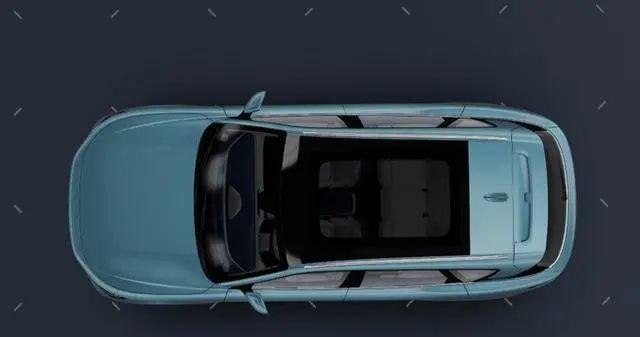With the development of automobile intelligence and electrification, as well as people's pursuit of aesthetics and comfort, automotive sunroofs have gradually developed in ordinary cars, and have also been given more functions and display forms. New products represented by panoramic canopy glass and dimmable canopy glass continue to be put on the car, among which the panoramic canopy glass has been applied to Tesla Model 3/Y/S, BYD Song Max, Xiaopeng P7, Weilai EC6/ET7/ES6/ES8 and many other models because it can improve the lighting, appearance, sense of space and experience of the whole vehicle, because of the advantages of the panoramic skylight, the dimmable canopy glass can solve the heat insulation problem caused by strong sunlight by adjusting the transparency of the glass, and has a good privacy effect. Many advantages of strong entertainment and high safety have been applied to Extreme Kr 001, Lantu FREE, and GAC Aion AION S PLUS.
Lantu FREE dimmable panoramic canopy

Three technical solutions for automotive dimming glass
There are three main technical solutions for automotive dimming glass, namely PDLC (polymer dispersed liquid crystal), SPD (suspended particles) and EC (electrochromic).
Comparison of automotive dimming glass technology solutions
PDLC is a physical dimming scheme that can achieve two effects of transparency and atomization, mainly by changing the arrangement of liquid crystal molecules in the glass, so that the glass switches between the transparent state and the atomized state. PDLC was invented earliest, with high technical maturity and low cost, and has been widely adopted by dimming glass manufacturers, but its light blocking and heat insulation effect is general.
Principles of PDLC technology
SPD also belongs to the physical dimming scheme, which is currently used in scenarios such as Mercedes-Benz high-end models and yachts, but due to the large haze of SPD, the high use voltage, the higher cost and the serious blue color, the car manufacturer is looking for alternatives.
EC is a chemical dimming scheme in which the device structure consists of an ion storage layer, a solid electrolyte, and an electrochromic layer that adjusts the glass's light transmittance by using the color changes generated by the material's electric field. EC has long been seen as a high-end technology, often applied to high-end luxury products such as the porthole of the Boeing 787, the Ferrari 575M Superamerica, the dimmable sunroof of the Maybach 62, etc.
Typical electrochromic device block diagram
After three generations of development, EC has broken through the thin film electrochromic color change technology and realized the on-board application of EC canopy. The first generation of EC products using violet technology, glass discoloration are blue, there are easy to leak, poor reliability, high power consumption and other issues; the second generation on the basis of a generation to improve the material and form, the choice of radiation resistance and chemical stability of the inorganic material - tungsten trioxide, mainly suitable for building energy-saving glass and large vehicles; the third generation of thin film electrochromic technology, the pure glass substrate upgraded to a thin film substrate, thereby expanding the scope of application of EC technology, representative case is extreme krypton 001 - The first model to achieve mass production of the EC canopy.
Extreme Krypton 001EC light-sensitive canopy
According to the parameters officially provided by Extreme Kr, the ULTRA UV barrier rate of the EC light-sensitive canopy is as high as 99.9%, the SPF sun protection coefficient can reach 50, and the EC light-sensitive canopy also has low thermal radiation (TTS).